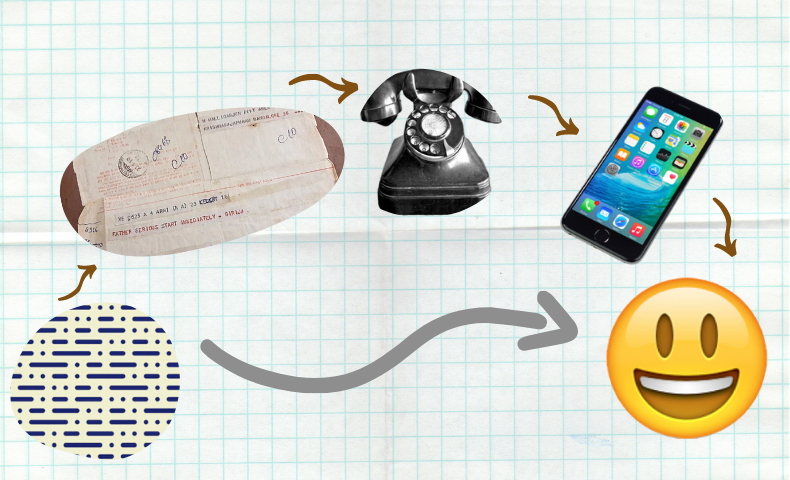Messaging apps revolutionized communication.
From letters passed on by pigeons to morse code to telegrams to telephones, and now apps – Humans have found innovative ways to pass along information. Now, we don’t have to wait for hours for messages in morse code to be decoded. All it takes is reaching out to your nightstand, picking up your phone, a couple of taps, and voila! Now, you can tell your friend on the other side of the world ‘Happy Birthday!’.
In the late nineties, Shigetaka Kurita invented something that changes the whole game. He created a set of 176 characters that represented real-life emotions and expressions on 12*12 pixels for Japan’s leading phone operator – Docomo. Emojis were born. The word itself is of Japanese origin meaning ‘Pictogram’.
Later, in the year 2009, Apple engineers Yasuo Kida and Peter Edberg submitted a proposal to create 625 new emoji characters into the Unicode Standard. The proposal was accepted in 2010, which made emojis accessible to everyone!
The cute little icons helped us get our message across, without having to bother with lines and lines of text. As times change and develop, so are our emojis! We now have emoticons to represent social distancing, wear your mask, and more! The iconic yellow faces now have multiple skin colour options, to join in people from different backgrounds in on the fun!
If the dizzying array of emojis don’t make you, well dizzy – this will! Different generations have their own interpretations of the iconic little circles. Millennials may think that the skull emoji represents death, or doom, Gen Z interprets that as ‘I’m dying of laughter’!
One thing we can ALL agree on, is that these emojis have made our lives easier. Texts are much more engaging, personal, and shorter – than they ever been.

Shalini Ramesh, 14, is a student in an International School in Chennai. She is an avid reader, budding author, average footballer, blogger, and enjoys baking. She is often found on the path of self-discovery.

